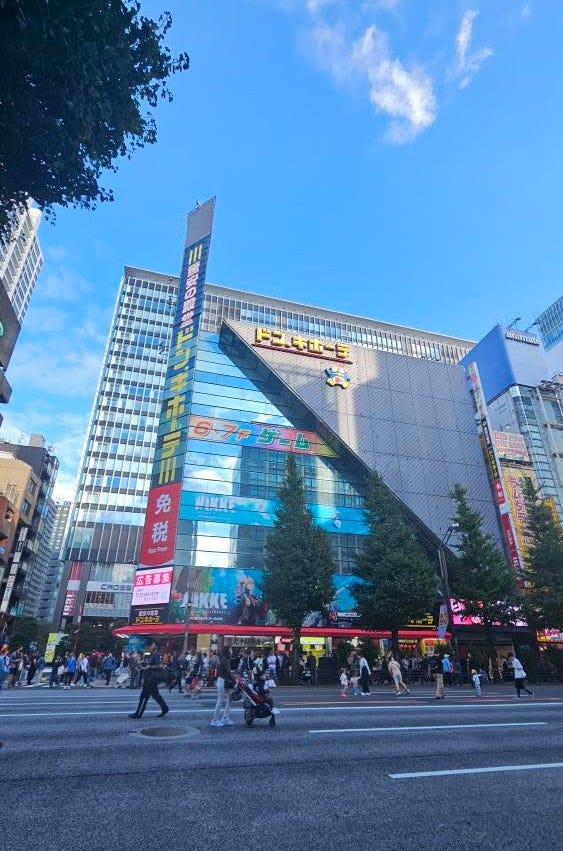Japan is Crowded: Who Exactly is Visiting?
Japan, aiming to become a tourism hub, has seen a surge in visitors in recent years—perhaps too many.
In November 2024, travel publication Fodor’s released its annual “No List,” warning travellers to reconsider visiting destinations suffering from overtourism. Among the 15 global locations listed were Tokyo and Kyoto—two of Japan’s most iconic cities.
The list calls attention to the mounting pressure on infrastructure and local communities, particularly in smaller cities like Kyoto, where overwhelmed transportation systems and strained public services have become increasingly common.
Despite these concerns, the Japanese government remains committed to an ambitious tourism strategy. In March 2025, Prime Minister Ishiba instructed his ministers to develop a new plan to achieve the country’s goal of welcoming 60 million foreign visitors annually by 2030.The target was originally announced in 2016 by then PM Abe.
Japan saw 36 million foreign visitors in 2024, continuing a rapid rebound from the COVID-19 pandemic.
Once seen as an overly optimistic dream, the idea of making tourism a cornerstone of Japan’s national economy is now closer to reality. Amid a rapidly aging society and shrinking workforce, Japan is viewing tourism not just as a hope, but as a necessity.
In recent years, Japan has seen a remarkable surge in foreign tourists, with 36 million arriving in 2024, a sharp increase from just under 8.6 million in 2010, according to Japan National Tourism Organization (JNTO).
This growth has been especially pronounced following the COVID-19 pandemic. In 2021, the number of visitors plummeted to 245,000, but by 2023, Japan had made a significant recovery, witnessing a swift rebound in international tourism.
Where Are Japan’s Tourists Coming From?
Much of this growth has come from Asia. In 2023, 1.8 million Chinese tourists visited Japan, which is 40 times more than in 2022. Southeast Asia has also shown significant increases. Vietnamese arrivals have surged from 8,000 in 2007 to around 173,000 in 2023.
Visitors from North and South America have grown by 270% and 280%, respectively, over the past 16 years.
In contrast, growth from Europe has been more modest, roughly tripling in the same period. The UK still leads among European nations with 270,000 annual visitors, but that figure is only double what it was in 2007. However, countries like Italy and Spain are showing more rapid growth in recent years.
Interestingly, the regional share of visitors has remained relatively stable over time – around 80% from Asia, 11% from North America, and 6% from Europe in 2023.
When viewed per capita, Hong Kong stands out—with an astonishing 28 visits to Japan per 100 residents annually. Outside Asia, Australia leads with 2 visits per 100 people.
Demographic trends also reveal intriguing patterns. Including business travellers, men outnumber women in most regions.
But Asia is an exception, where women travel to Japan more than men, especially in the 50–70 age groups.
In Europe, however, the gender gap skews sharply in the other direction: men in their 40s outnumber women by nearly 2 to 1, the widest gender disparity among age groups.
Different Destinations: Kyoto for Europeans, Osaka for Asians
Travel preferences also vary by nationality. British, French, and German tourists tend to favour Japan’s “Golden Route”—Tokyo, Kyoto, and Osaka. Tokyo, as the capital, offers a modern urban experience, while Kyoto, known for its historical heritage, is home to temples, shrines, and traditional culture.
Meanwhile, Asian visitors are more drawn to Osaka, with its vibrant street culture and shopping destinations, making it the top destination for South Korean travellers.
Hokkaido, known for its natural beauty and seafood, is also especially popular with visitors from Asia.
City or Countryside?: A Visitor’s Perspective
Carlos Toranzo, from Lima, visited Japan in October 2024, as part of his master’s degree program. During his ten-day stay, he spent time in Tokyo and Minamiunonuma, a small town a few hours north of the capital, where he took part in his program.
Known for its rice production, the town represents a more rural and traditional side of Japan—one that receives far fewer tourists than major cities.
“I preferred Tokyo because there are a lot of places to shop,” Carlos says.
He especially enjoyed exploring Akihabara, once known for electronics and now famous for anime and gaming. “I went there to buy an original Nintendo 3DS from 2011. That model was only sold in Japan,” he explains.
Carlos also found Tokyo easier to navigate in English. “In Minamiunonuma, it was difficult to communicate. We went to a karaoke place and spent ten minutes trying to order beers.”
After all that, they eventually found out the place didn’t serve beer.
In Tokyo, however, staff at stores and a post office used translation devices. “Language wasn’t really a big problem in Tokyo,” he says.
If he gets the chance to return to the country, he’d definitely visit Kyoto.
“I think there are more temples there – more traditional and iconic places. Tokyo, I feel, is a modern place, but it's not very cultural.”
It’s Not Just About the Money for Locals
Tourism is often discussed in terms of the economic benefits it brings—and the problems it causes. But for some local residents, its value goes beyond money.
Kana Ishikawa, a second-year university student in Kyoto, volunteers as a guide with The Good Samaritan Club, a student-run organisation that offers tours to foreign visitors. The club, made up of students from universities across the city, received about 980 guide requests in 2024 alone.
“The most popular places we visit with guests are Fushimi Inari Shrine, Nishiki Ichiba Market, and Gion,” Kana says. “Many people know Gion as the Maiko neighborhood. Recently, Hanami Koji Street has become especially crowded with large overseas tour groups.”
Hanami Koji is an iconic street located in Gion, a traditional flower district known for traditional performers called geisha, geiko or maiko. The area attracts not only foreign tourists but also school groups from across Japan.
Nishiki Ichiba Market is another popular destination among foreign tourists, with its food stalls and lively downtown atmosphere. It is, however, one of the most notoriously overcrowded spots for locals.
“Because it’s such a narrow market, it often gets so packed that you literally can’t move,” Kana explains.
So, what motivates students to guide tourists as volunteers?
“I love listening to guests’ stories—from their backgrounds to how they live now—especially when their lives are very different from mine.
“Students join our guide club for different reasons. Some are interested in history, while others want to improve their English skills.”
The Buses Are Full: Kyoto’s Traffic Struggle
As a local student, Kana knows how to navigate Kyoto’s crowded transportation system.
“I never take the bus that goes to Kinkaku-ji,” she says. “It’s always so packed that I can’t even get on.”
“I often hear that new students to the university are late for classes because they wait for those buses and can’t get on.”
There is a reason why the overcrowded buses are always among biggest concern for locals. With relatively few railway lines, the city depends heavily on buses to connect major destinations.
The city government is under growing pressure to address the issue. Mayor Koji Matsui has proposed raising subway and bus fares for tourists from outside the city. However, national law prohibits fare discrimination based on residency, so this plan cannot move forward without changes to legislation.
Haruka Ueno, who works for a major railway company in the Kyoto area, used to operate trains to Arashiyama—a scenic district in western Kyoto, famous for its cherry blossoms in spring and colorful foliage in autumn. These seasonal attractions draw large crowds, often causing heavy congestion.
“The trains were so crowded with tourists heading to Arashiyama,” she recalls. “The company tried lengthening the trains by adding more cars, but we couldn’t keep up.”
At peak times, she estimates, more than half the passengers were foreign tourists.
The Tourism’s Future: Hope, Gamble, or Something More?
The Japanese government is trying to reduce the heavy concentration of tourists in major cities by encouraging travel to other regions. Domestically, many people already enjoy destinations like Okinawa, with its beaches; Nagano, known for its mountain scenery; Fukuoka, with its lively nightlife; and Matsuyama, famous for hot springs and literary heritage.
As young people continue to move to big cities and rural areas lose population, this strategy offers a small but meaningful hope for the country. If tourism becomes more common in medium-sized cities, it may encourage young people to stay in their hometowns instead of moving away.
In a country where economic growth has stalled and the population continues to age, the government is placing its future in the hands of the tourism and cultural industries, taking advantage of a weak currency.
This could be seen as a dream scenario of limitless growth—or as a risky gamble on an economy built on intangibles, lacking a solid, physical foundation.
The Good Samaritan Club, founded in 1961 to welcome foreign visitors expected for the 1964 Tokyo Olympic, reflects a different side of tourism. The enthusiasm with which Kyoto students greeted visitors back then—and still do today—suggests that tourism, at its heart, can be a mutually meaningful exchange.
Or, am I too optimistic?




